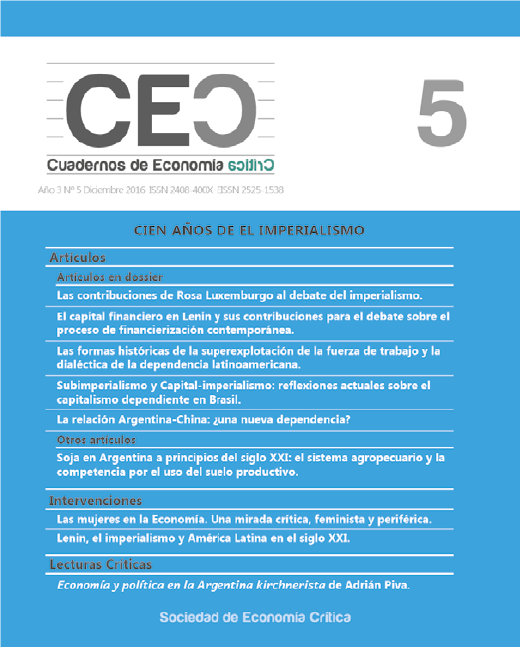Soya in Argentina in the early XXI century: the agricultural system and the competition for productive soil exploitation
Abstract
In the early XXI century, the soya has adopted a central role in Argentina’s economy. The context of high international prices, the new macroeconomic framework and the adoption of a new technology block have promoted crop planting in 15 of the 24 provinces. During the 2013-2014 campaign, the culture reached 20 million hectares planted, which involved two thirds of the total area planted in Argentina. These figures show the economic, territorial, political and social relevance that the oleaginous has acquired in the traditional Pampas and also in extrapampeanas areas. This article reviews which have been the results by competition for productive soil exploitation and explores the mechanisms by which the soybean acreage has been expanded.
Downloads
Published
How to Cite
Issue
Section
License
Copyright notice
Authors retain copyright and grant the journal the right to be the first publication of the work as licensed under a Creative Commons Attribution License that allows others to share the work with an acknowledgement of authorship of the work and initial publication in this journal.
Authors may separately enter into additional arrangements for non-exclusive distribution of the version of the work published in the journal (e.g., placing it in an institutional repository or publishing it in a book), with an acknowledgement of initial publication in this journal.
Authors are allowed and encouraged to disseminate their work electronically (e.g. in institutional repositories or on their own website) before and during the submission process, as it may lead to productive exchanges, as well as earlier and higher citation of published work (see The Effect of Open Access).























